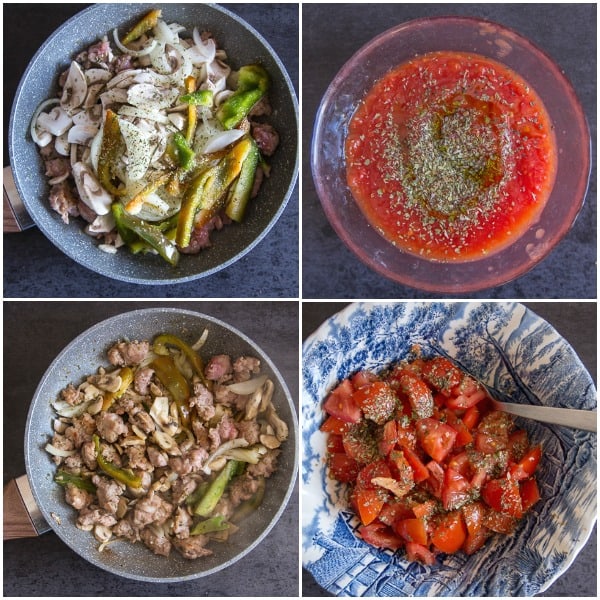Different types of Pizza to make
I made two big pizzas and one tiny pizza using this recipe for pizza dough. I occasionally create a completely vegetarian version with fresh, peeled, and halved cherry tomatoes, peppers, mushrooms, and onions.
Alternately, I’ll sauté a few Italian sausages (with the casing removed) together with chopped peppers, mushrooms, and onions, then top the dish with a pureed tomato sauce (with just a few spices and a little olive oil).
After baking, I always top each pizza with shredded hard mozzarella before adding chopped fresh tomatoes and sliced black olives to the third pie.

How to make and form the Dough
- Make careful to knead the dough until it is smooth and elastic while creating homemade pizza dough.
- Allow the dough to rise in a basin that has been gently oiled; cover the bowl with plastic wrap and a fresh, big kitchen towel while it rises.
- Allow the bowl to rise for about two hours in a warm, draft-free place.
- Use olive oil only.

- Divide the dough into two or three rounds once it has risen, cover each round with a kitchen towel, and set aside for 20 to 30 minutes to rest.
- When you try to put the dough into the pan, it will spread out this manner rather than spring back.
- Rolling the dough using clean hands instead of a rolling pin is preferable.
Why grease the dough before rising?
The oil prevents the dough from developing a crusty top and maintains it smooth and soft. Always place the dough in a bowl that has been gently greased.
How long do you knead it for?
Make careful to knead the dough for about 7 minutes by hand and 5 minutes by machine, or until it is elastic and smooth. The dough hook in your stand up mixer may be used to knead the dough by hand or mechanically. Avoid over-kneading.
Using your finger tips to gently stretch the dough is also preferable than rolling a pin. You want the crust to be light and airy, which is exactly what the dough’s air bubbles do.
What does Punching the dough down do?
When you punch the dough down, some of the gas bubbles that the yeast created while it was rising are removed, resulting in a finer grain. Additionally, by relaxing the gluten, this makes it simpler to mold the dough.








